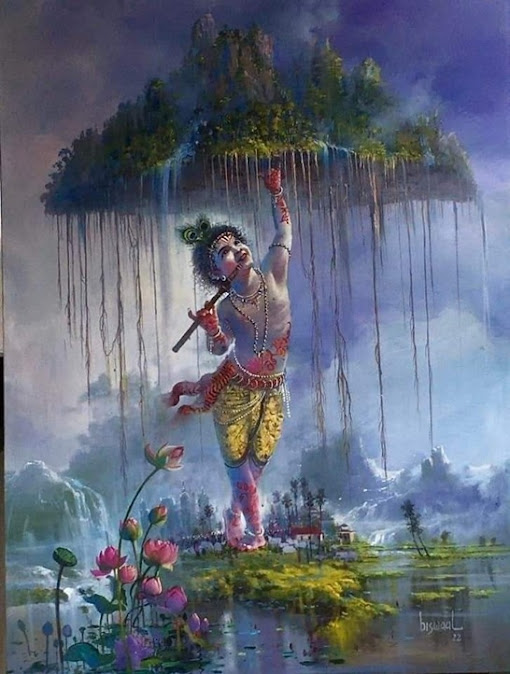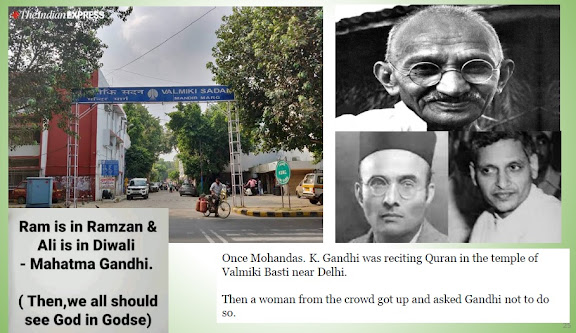MATTER, HUMAN SOUL AND SUPREME SOUL BY S. SANKARAN
(Based on the comments by Swami Tapasyananda)
In Bhagavad Gita, soul is portrayed on many verses as
changeless and imperishable and permanent. It is emphasized that Soul is
nothing to do with matter or Prakriti and hence Soul is pure.
But we are informed in a verse that matter or Prakriti is of
two kinds – Lower and Higher Elements and Soul is equated as Higher Element
whereby Soul becomes very much connected with matter.
To make the subject matter of Soul still difficult, another
verse indicates that Souls are divided into two categories – Perishable and
Imperishable. It becomes still more difficult, as imperishable is also divided
into Human Soul (Jivatma) and Supreme Soul (Purushothama).
Let me quote the relevant passages before going into the
details and their explanations:
Chapter 7: Stanzas 4 to 6:
Prakriti – Matter is divided into two parts – Lower and Higher. Lower one consists
of eight elements viz. earth, water, fire, air, ether, ego, intellect and mind.
Higher is only one – Life Element i.e. Soul. These two matters are the wombs of
all creatures. God is the connecting link as rows of gems of a string.
Chapter 15: Stanzas 16 to 19:
There are two types of Purushas – Souls. One is perishable and the other is
imperishable. Even imperishable is divided into Human Soul and Supreme Soul.
Supreme Soul is superior to imperishable and the Vedas declare Supreme Soul as
Purushothama. Lord Krishna is to be worshiped as Supreme Soul.
The main point of discussions is about the characteristics of
Soul or Self or Spirit. Simple and direct meaning are that soul while residing
in body can be termed as “Perishable” due to its association with the
perishable body and that when Soul leaves the body, it becomes “Imperishable”.
When “Imperishable Soul” attains salvation, that Soul becomes one with Supreme
Soul.
Another school of thoughts treats perishable as Non-liberated
Soul and Imperishable as Liberated Soul. Souls, which are always linked to God
as revealed in the text above as rows of gems on a string, get merged with God
on their liberation and such Souls need no necessity to have the support of the
string any more.
Whatever stand and explanations we choose, these passages seem
to be at variance with the all-powerful theory of Advaita. But, as per Adi
Sankara, the Bhagavad Gita is the treatise on Advaita philosophy.
This confusion, some scholars declare, is due to Maya-Sakti.
This becomes a good shield against any discussions or interpretations.
The purpose of this small article is only to make an awareness
of such passages and those who are interested to go further deep, can do so.






Comments